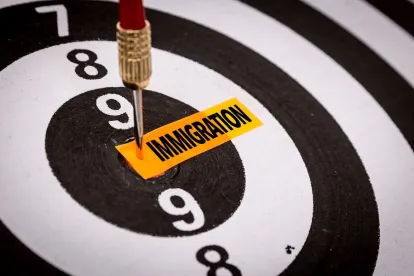The Trump Administration has been targeting outsourcing and staffing firms that use H-1B non-immigrant visas, the most popular employment-based visa for foreign professional workers. The Administration has issued guidance after guidance since March 2017 that add requirements for such firms.
Rather than hiring workers one by one, U.S. companies may engage outsourcing and staffing firms that obtain H-1B visas and hire groups of high-skilled foreign workers who then are placed with the U.S. company as needed. The Administration has targeted this business model.
Buy American, Hire American
As part of its effort to protect the U.S. workforce and prevent the abuse of immigration programs as outlined in the “Buy American, Hire American” Executive Order, the Trump Administration has targeted outsourcing and staffing firms that use H-1B visas. The Administration said abuses of the H-1B program, such as not paying the required wage or having workers do “non-specialty occupation” work, harm the U.S. workforce and are more likely to occur at third-party worksites.
2017 Guidance
On March 31, 2017, the U.S. Citizenship and Immigration Services (USCIS) published new guidance aimed at outsourcers and others who might be trying to bring technology workers (i.e., computer programmers) to the U.S. at lower salary ranges. The guidance suggested that computer programmer positions might not be “specialty occupations” and, therefore, might not be eligible for H-1B visas. The USCIS warned employers that H-1B petitions for computer programmers would be subject to greater scrutiny. In the first eight months of 2017, USCIS issued more than 85,000 Requests for Evidence (RFEs) asking for more evidence on H-1B petitions. This was an increase of 45 percent over the previous year and the highest number since 2009.
On April 3, 2017, the Department of Justice reminded employers not to discriminate against U.S. workers with hiring practices that favor H-1B workers. Having a discriminatory preference for using outsourcing firms was one example given. The agency noted that it was committed to “vigorously prosecuting” such claims of discrimination.
That same day, the USCIS announced that Fraud Detection and National Security (FDNS) site visits would be more targeted, including a focus on H-1B workers who work off-site at another company or organization’s location.
2018 Guidance
In March 2018, the USCIS issued new guidance clarifying requirements for H-1B petitions involving third-party worksites. According to the guidance, evidence is required to show that the beneficiaries who work at third-party locations will be employed in a specialty occupation throughout the requested period. Evidence also is required to show that the petitioner maintains an employer-employee relationship with the beneficiary throughout that period. The evidentiary requirements are onerous. They include:
-
Detailed evidence of work assignments;
-
Copies of all contractual agreements between all parties;
-
Itineraries with specific dates and locations; and
-
Copies of detailed statements of work signed by the end-user client.
With this guidance, the USCIS confirmed that no deference would be given to prior adjudications.
In April 2018, the USCIS introduced restrictions on staffing agencies hiring OPT STEM students. The optional practical training (OPT) program for international F-1 visa students with U.S. degrees in science, technology, engineering, or mathematics (STEM) allows these students to remain in the U.S. for up to 36 months after obtaining their degrees to pursue degree-related work experience. The newest restriction states that to be eligible for OPT STEM training, there must be a bona fide employment relationship and the training should take place on-site at the employer’s place of business, unless it could be shown that the trainee was being actively supervised by the employer at the third-party location.
Several small technology staffing companies and a trade organization, the Small and Medium Enterprise Consortium, have filed suit in New Jersey federal court seeking a temporary restraining order against the USCIS enforcing the new requirements. The plaintiffs noted that the H-1B program was designed to ease the critical shortage of technology workers in the U.S. The case is still pending.
More Coming
More changes may be coming for H-1B workers at third-party worksites. Reportedly under consideration is the addition of a section to the H-1B Labor Condition Application (LCA) forms to require the name and address of third-party worksites. Employers seeking to hire under the H-1B visa program must first complete an LCA to provide certain information to the Department of Labor regarding wages, working conditions, and benefits available to the foreign workers. Currently, an address is required, but not the name of the company. This change will make the names of companies who use outsourcing and staffing firms public record and may be part of the Administration’s “name and shame” agenda.
***
For the first time on record, according to the Department of Labor, the number of U.S. job openings exceeds the number of job seekers. Further, at the end of May 2018, the unemployment rate was 3.3 percent for adult men and women, the lowest level since 2000.
Given the current low unemployment in the U.S., the Administration’s economic purpose in targeting outsourcing and staffing firms is unclear. The newest guidance and OPT STEM rules are on course to stifle the ability of technology staffing companies to serve their clients.




 />i
/>i
